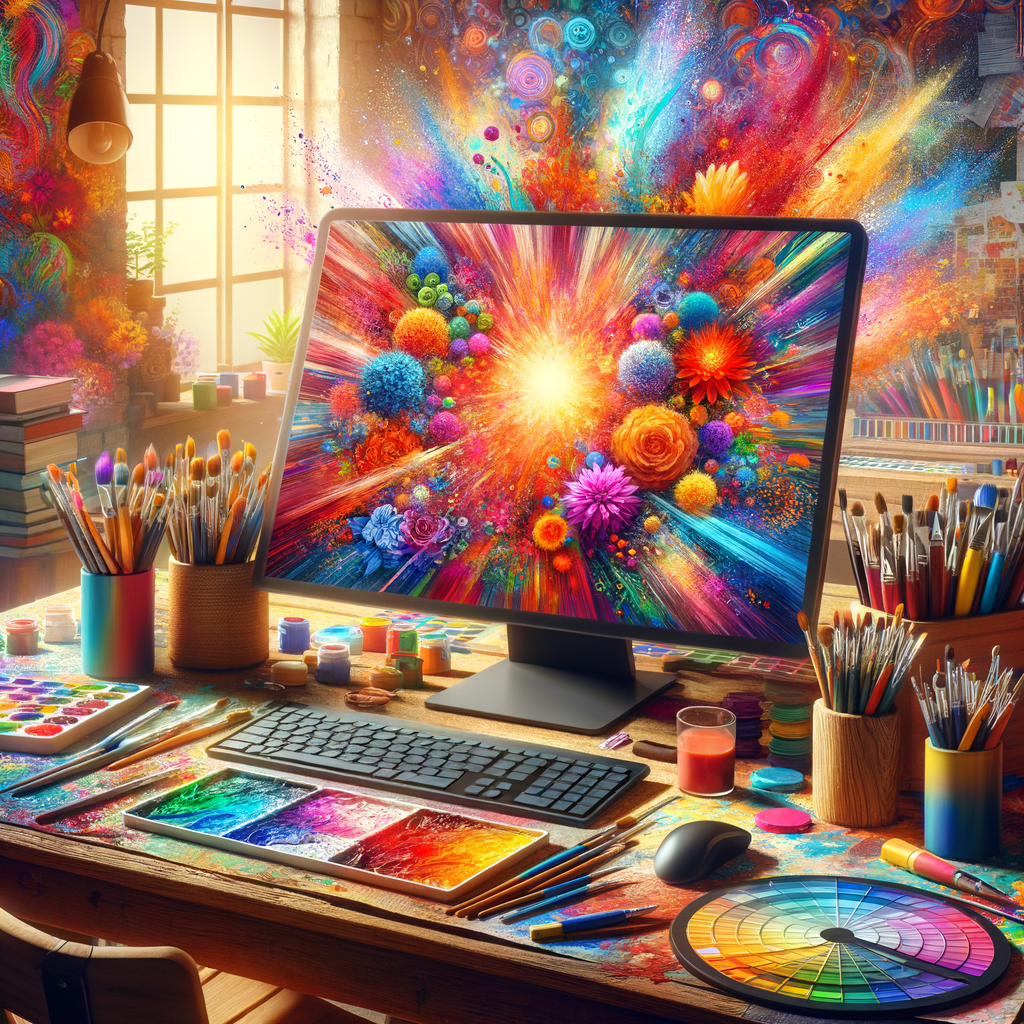
Color is one of the most vital elements in any form of art, and in digital art, it plays an even more crucial role. The digital canvas offers an endless range of possibilities for color combinations and palettes, making it both exciting and overwhelming for artists. This guide aims to help digital artists master the use of color, turning their creative visions into reality. Whether you are just starting out or are an experienced artist, understanding color theory, techniques for selection, and application can significantly enhance your artwork. In this article, we will cover essential tips for creating compelling color palettes, understand the psychology of color, and explore methods to achieve harmony and depth in your digital paintings.
The world of color can often feel daunting. Yet, once you grasp the fundamentals of color theory, you can significantly improve your digital artistry. Here's a structured approach to help you navigate the colorful realm of digital art.
Understanding Color Theory
Before diving into color selection, it’s crucial to understand the basics of color theory. The primary colors—red, blue, and yellow—form the basis of all other colors through various combinations. Secondary colors—green, orange, and purple—are created by mixing primary colors. Tertiary colors arise from combining primary and secondary colors.
In digital art, colors can be categorized in several ways:
- Hue: The name of the color defined by its wavelength.
- Saturation: The intensity or purity of the color.
- Value: The lightness or darkness of a color.
Understanding how these aspects interact will empower you to create more dynamic and appealing artworks.
The Color Wheel
The color wheel is a valuable tool for artists, providing a visual representation of colors and their relationships. Using the color wheel can help you select complementary colors—colors situated opposite each other on the wheel—and analogous colors—colors that sit next to each other. This knowledge is essential for creating balanced color palettes that enhance your art.
Creating Effective Color Palettes
Now that you grasp color theory, the next step is creating effective color palettes. Here are some tips for achieving this:
- Limit Your Palette: Too many colors can overwhelm your composition. Aim for a cohesive palette of three to five colors for a balanced look.
- Consider the Mood: Different colors evoke different emotions. For instance, blue often conveys calmness, while red can invoke passion or urgency.
- Use Color Harmony: Strive for harmony in your palette. Using harmonious colors can visually unify your composition, making the artwork more appealing.
The Psychology of Color
Colors can profoundly affect viewer perception and emotional response. For example:
- Red: Energy, passion, action
- Blue: Trust, reliability, calmness
- Yellow: Happiness, optimism, warmth
- Green: Nature, growth, harmony
When selecting colors, consider how you want viewers to feel when they interact with your artwork.
Techniques for Choosing Colors
Several techniques can help you choose colors effectively:
- Color Sampling: Use color sampling tools available in software to select colors directly from reference images for accuracy.
- Using Reference Images: Study artworks or photographs to understand how colors work together in various artworks. Pay attention to palettes that resonate with you.
- Experimentation: Don’t shy away from experimentation. Creating different palettes and testing them out will give you a feel for what works best in your style.
Further Techniques for Incorporating Color
Beyond color selection, considering how you apply color can significantly impact your digital artwork:
- Layering Colors: Utilize layers to build up colors gradually, allowing for greater control and depth.
- Utilizing Brushes: Different brushes can create various textures and effects, so experiment with brush settings to achieve the desired finish.
- Blending Techniques: Understand blending modes and their effects on color interaction. Experiment with these for unique outcomes.
Color in Composition
The composition of your artwork is just as important as the colors you choose. Here are some tips on using color effectively within your compositions:
- Focal Point: Use color to draw attention to the focal point of your artwork. Bright or contrasting colors can guide the viewer's eye.
- Background vs. Foreground: Differentiate between background and foreground colors. Darker colors often recede, making lighter colors stand out.
- Balance and Contrast: Ensure a balanced distribution of colors. Use contrasting colors to create depth and dimension.
Practical Applications: Exercises and Tools
To hone your color skills, regular practice is invaluable. Here are exercises to help you improve:
- Palette Creation Exercise: Pick a theme or feeling and create a color palette that conveys that emotion.
- Recreate Existing Art: Choose artwork you admire and attempt to replicate the color palette, analyzing your choices along the way.
- Daily Sketches: Engage in daily sketches where your primary focus is color application, experimenting freely.
Digital Tools and Resources
Several digital tools can assist you in your color journey:
- Color Pickers: Both online color pickers and software-integrated features make it easier to select and match colors accurately.
- Palette Generators: Websites and apps like Coolors and Adobe Color can help you create and save color palettes.
- References and Tutorials: Explore online tutorials, courses, and books dedicated to color theory and digital painting techniques.
The Importance of Continuous Learning
The art world is ever-changing, and so should your skills. Engage with communities, participate in challenges, and never stop exploring the intricacies of color in digital art. Your continued learning will reflect in your work and creativity.
In conclusion, mastering color in digital art requires a blend of theoretical knowledge, practical application, and an open mind towards experimentation. By understanding the fundamentals of color theory, practicing with various palettes, and continuously learning, you can unlock new levels of creativity and expression in your digital artworks.

